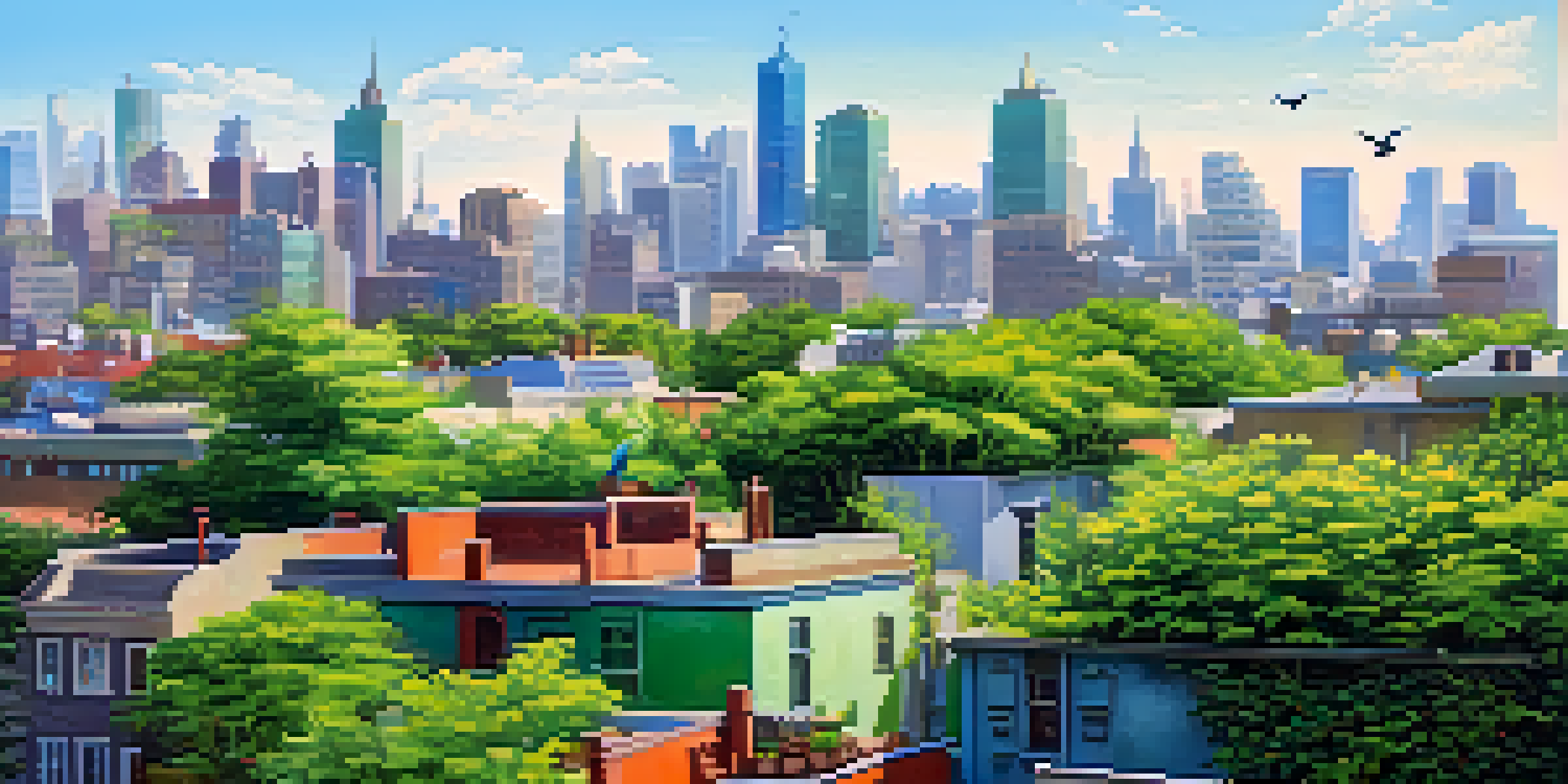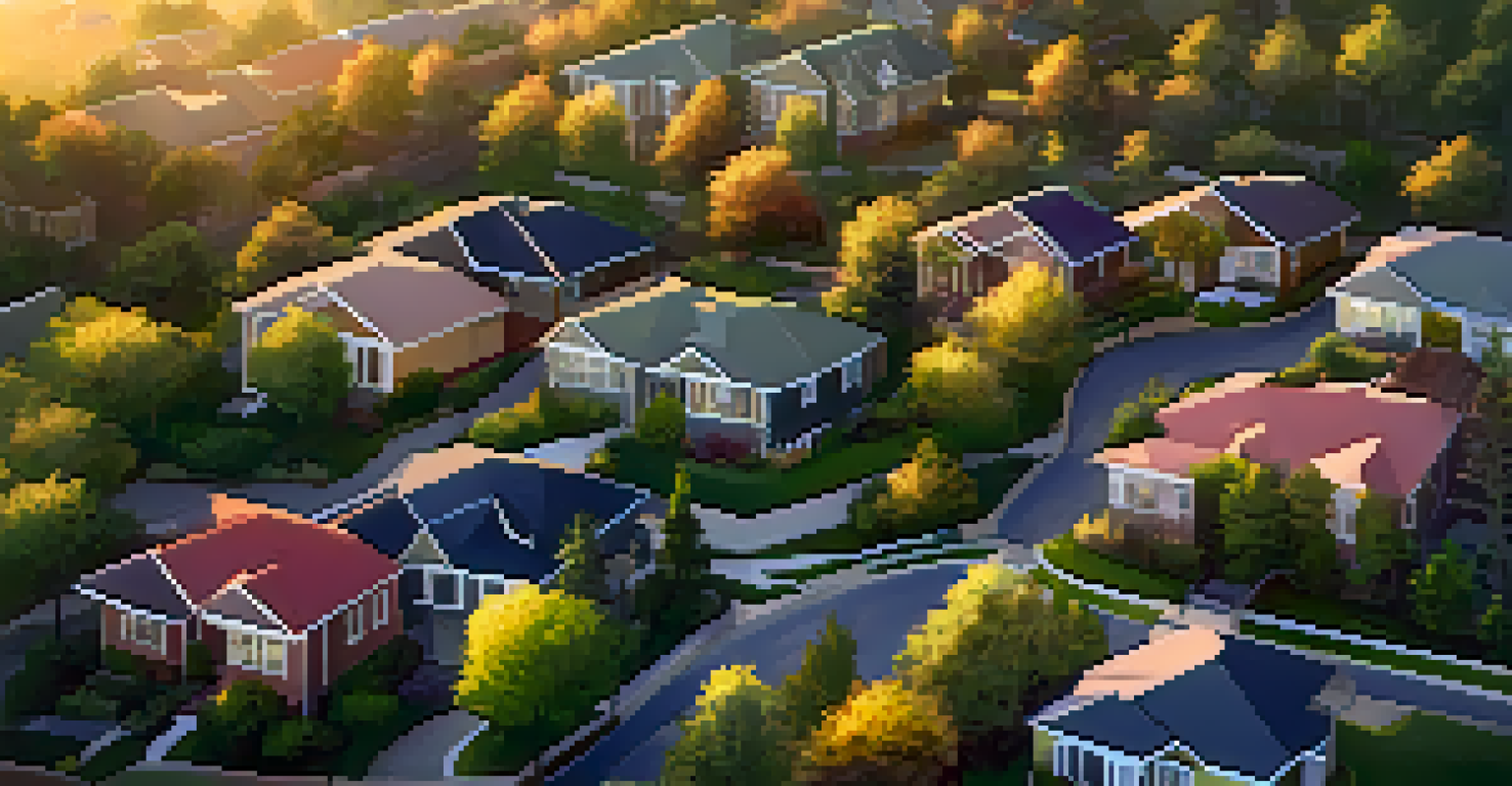Cost-Effective Benefits of Installing a Green Roof

Introduction to Green Roofs and Their Cost Benefits
Green roofs, which are layers of vegetation on rooftops, provide numerous advantages beyond aesthetics. They can significantly reduce energy costs by insulating buildings, keeping them cooler in summer and warmer in winter. This natural insulation can lead to lower heating and cooling bills, which is especially beneficial for commercial properties with large roof surfaces.
Green roofs are a great way to save energy and improve air quality, making our cities more livable.
In addition to energy savings, green roofs help manage stormwater runoff, which can mean lower water bills. By absorbing rainwater, they reduce the burden on municipal drainage systems, potentially lowering fees for property owners. This eco-friendly approach not only promotes sustainability but also enhances the financial viability of buildings.
Moreover, many cities offer incentives for green roof installations, such as tax credits or grants. These financial incentives can offset initial installation costs, making it an even more attractive investment. Therefore, when considering a green roof, it’s essential to factor in both immediate and long-term financial benefits.
Energy Efficiency: How Green Roofs Reduce Utility Bills
One of the standout benefits of green roofs is their ability to improve energy efficiency. By acting as an insulating layer, they can help maintain a consistent indoor temperature, which means less reliance on heating and cooling systems. This can translate to significant savings on monthly utility bills for homeowners and businesses alike.

For example, studies have shown that buildings with green roofs can reduce cooling costs by up to 75% during peak summer months. This is particularly important in urban areas, where heat islands can lead to increased energy consumption. A green roof acts as a natural barrier, keeping the heat out and the cool air in.
Cost Savings Through Energy Efficiency
Green roofs significantly reduce heating and cooling bills by providing natural insulation.
Additionally, the longevity of HVAC systems can be extended due to reduced strain, leading to further savings in maintenance and replacement costs. Overall, the energy efficiency gained from a green roof is a compelling reason to consider this sustainable option.
Stormwater Management: Saving Costs with Natural Solutions
Effective stormwater management is crucial for urban areas, as it helps prevent flooding and protects water quality. Green roofs play a pivotal role in absorbing rainwater, which can drastically reduce runoff and the associated costs of stormwater management systems. By installing a green roof, property owners can contribute to a cleaner environment while saving money.
Investing in green infrastructure, like green roofs, is not just good for the planet; it also makes financial sense.
When excess water is absorbed by the vegetation and soil, it decreases the need for costly drainage infrastructure upgrades. This is especially beneficial in cities that face heavy rainfall, where managing stormwater can be a significant expense. By utilizing a green roof, property owners can make a proactive investment in their property’s future.
Moreover, many municipalities are implementing green infrastructure mandates, which may require property owners to manage stormwater effectively. By installing a green roof, property owners can not only comply with regulations but also avoid potential fines or fees associated with non-compliance.
Air Quality Improvement: The Hidden Cost Savings
Green roofs don’t just beautify a space; they also contribute to improved air quality. The plants on a green roof absorb carbon dioxide and release oxygen, helping to mitigate urban air pollution. This can lead to a healthier environment for both residents and workers, which can translate into economic benefits down the line.
Healthier air quality can reduce healthcare costs as fewer respiratory issues arise in cleaner environments. Consequently, businesses may experience decreased absenteeism and increased productivity among employees, resulting in higher overall efficiency. This indirect cost saving is often overlooked but can have a significant impact over time.
Incentives and Increased Property Value
Many cities offer financial incentives for green roofs, which can enhance property market value.
Furthermore, green roofs can also filter pollutants and capture particulate matter, contributing to a more sustainable urban ecosystem. By investing in a green roof, you’re not just enhancing your property; you're also investing in a healthier community.
Increased Property Value: Green Roofs as an Investment
Installing a green roof can significantly increase your property’s market value. Many homebuyers and tenants are becoming increasingly environmentally conscious, seeking properties that offer sustainable features. A green roof not only attracts attention but also sets your property apart in a competitive market.
Real estate studies have shown that properties with green roofs can command higher rental rates and selling prices. Buyers are often willing to pay a premium for eco-friendly amenities, which can yield a higher return on investment. This makes green roofs not just an expense, but an asset that enhances property value.
Additionally, properties with green roofs may see reduced vacancy rates, as they appeal to a broader audience looking for green living options. This can lead to a more stable income stream for property owners, further solidifying the financial benefits of investing in a green roof.
Biodiversity and Ecosystem Services: More Than Just Aesthetic
Green roofs create habitats for various species, including birds, insects, and other wildlife, contributing to urban biodiversity. This aspect is often overlooked, but it plays a vital role in maintaining ecological balance within cities. By providing these habitats, green roofs support local ecosystems while enhancing the beauty of urban landscapes.
Moreover, increased biodiversity can lead to better pollination and pest control services, reducing the need for chemical pesticides and fertilizers. This not only fosters a more natural environment but also leads to long-term cost savings for property owners. As ecosystems thrive, they contribute to healthier urban settings.
Environmental Benefits and Biodiversity
Green roofs support local ecosystems, improve air quality, and promote urban biodiversity.
By embracing green roofs, cities can promote a more sustainable coexistence between nature and urban development. This holistic approach to property management is a key factor in the long-term viability of urban spaces.
Conclusion: Investing in a Greener Future
In conclusion, the cost-effective benefits of installing a green roof are compelling and multifaceted. From energy savings and stormwater management to improved air quality and increased property value, green roofs offer a wide range of financial advantages. They represent a sustainable investment that pays dividends for both property owners and the environment.
As cities continue to grow and face environmental challenges, embracing green technology becomes increasingly essential. Green roofs not only help mitigate these challenges but also enhance the overall quality of urban life. By investing in a green roof, you are contributing to a healthier, more sustainable future for everyone.

Ultimately, the decision to install a green roof is not just about immediate savings; it’s about creating a legacy of sustainability and environmental stewardship. So, whether you’re a homeowner or a business owner, consider the long-term benefits of going green.